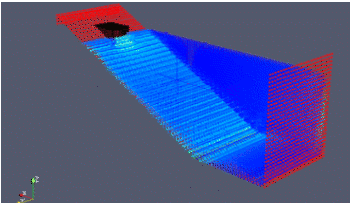







From SPHYSICS
| Line 17: | Line 17: | ||
#'''[[Visualization| Visualization: Images & Videos]]''' | #'''[[Visualization| Visualization: Images & Videos]]''' | ||
#'''[[Code History| Code History & Fixed Bugs (UPDATES)]]''' | #'''[[Code History| Code History & Fixed Bugs (UPDATES)]]''' | ||
| − | #'''[[ | + | #'''[[Future_developments| Future_Developments & Releases]]''' |
#'''[[SPHYSICS Publications| Publications using the SPHysics code]]''' | #'''[[SPHYSICS Publications| Publications using the SPHysics code]]''' | ||
#'''[[SPHYSICS Reference| How to reference SPHysics]]''' | #'''[[SPHYSICS Reference| How to reference SPHysics]]''' | ||
| Line 26: | Line 26: | ||
<big>'''The SPHysics Code'''</big> | <big>'''The SPHysics Code'''</big> | ||
| − | SPHysics is a Smoothed Particle Hydrodynamics (SPH) code inspired by the formulation of Monaghan (1992) developed jointly by researchers at the Johns Hopkins University (U.S.A.), the University of Vigo (Spain), the University of Manchester (U.K.) and the University of Rome La Sapienza (Italy). We are excited to announce that the latest official release of version 1.4 of SPHysics is now available. | + | SPHysics is a Smoothed Particle Hydrodynamics (SPH) code inspired by the formulation of Monaghan (1992) developed jointly by researchers at the Johns Hopkins University (U.S.A.), the University of Vigo (Spain), the University of Manchester (U.K.) and the University of Rome La Sapienza (Italy). Developed over a number of years primarily to study free-surface flow phenomena where Eulerian methods can be difficult to apply, such as waves, impact of dam-breaks on off-shore structures. We are excited to announce that the latest official release of version 1.4 of SPHysics is now available: '''[[Code_Features| Code_Features]]'''. |
| − | + | ||
| − | + | ||
| − | + | ||
| − | + | ||
| − | + | ||
| − | + | ||
| − | + | ||
| − | + | ||
| − | + | ||
| − | + | ||
| − | + | ||
| − | + | ||
| − | + | ||
| − | + | ||
| − | + | ||
| − | + | ||
| − | + | ||
| − | + | ||
| − | + | ||
| − | + | ||
| − | + | ||
| − | + | ||
| − | + | ||
| − | + | ||
| − | + | ||
| − | + | ||
| − | + | ||
| − | + | ||
| − | + | ||
| − | + | ||
'''[[Downloads| Download SPHysics now!]]''' | '''[[Downloads| Download SPHysics now!]]''' | ||
| − | |||
| − | |||
| − | |||
| − | |||
| − | |||
| − | |||
| − | |||
| − | |||
| − | |||
| − | |||
| − | |||
| − | |||
| − | |||
| − | |||
| − | |||
| − | |||
| − | |||
| − | |||
| − | |||
| − | |||
| − | |||
| − | |||
== Links == | == Links == | ||
Revision as of 11:37, 18 September 2009
SPHysics - SPH Free-surface Flow Solver
Open-Source Smoothed Particle Hydrodynamics code
v1.4 UPDATE RELEASED: FEBRUARY 2009
- Welcome to SPHysics
- Developers (photos) and Contributors
- Downloads (serial, parallel, GPU, hybrid-coupling)
- Documentation
- SPHysics FAQ
- SPHysics Forum
- Visualization: Images & Videos
- Code History & Fixed Bugs (UPDATES)
- Future_Developments & Releases
- Publications using the SPHysics code
- How to reference SPHysics
- Links - SPHERIC
- Help and Info about SPHysics website
The SPHysics Code
SPHysics is a Smoothed Particle Hydrodynamics (SPH) code inspired by the formulation of Monaghan (1992) developed jointly by researchers at the Johns Hopkins University (U.S.A.), the University of Vigo (Spain), the University of Manchester (U.K.) and the University of Rome La Sapienza (Italy). Developed over a number of years primarily to study free-surface flow phenomena where Eulerian methods can be difficult to apply, such as waves, impact of dam-breaks on off-shore structures. We are excited to announce that the latest official release of version 1.4 of SPHysics is now available: Code_Features.
Links
All developers of the SPHysics code are members of SPHERIC which is the
SPH European Research Interest Community.
This organisation seeks to promote the development and use of SPH within the academic and industrial communities. Click here for the SPHERIC Home Page
